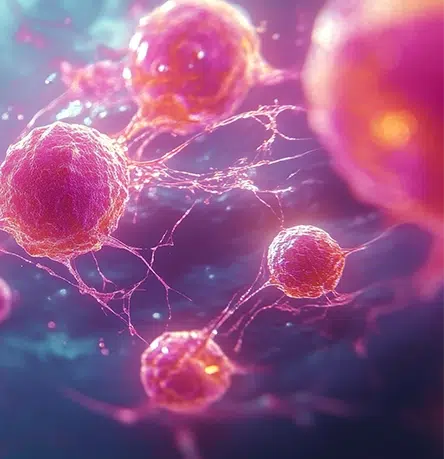
Drug candidate selection includes perspectives from numerous disciplines (drug discovery, drug safety, drug metabolism and pharmacokinetics (DMPK), pharmaceutics, clinical pharmacology and biostatistics). Many organizations use the fail fast model by integrating development functions into discovery to minimize failures in preclinical Good Laboratory Practice (GLP) studies. More forward testing allows organizations to select better compounds and to build better, long-term development plans.
Clinical proof-of-concept is a critical milestone that requires translation from animal pharmacology models to man. Ensuring drug and metabolite exposures in plasma and at site-of-action is critical to validating the model. In the central nervous systems (CNS), measurements in cerebral spinal fluid yield penetration or effect (biomarkers)1. For anti-infective agents, tissue penetration or intracellular studies ensure that the minimum inhibitory concentration (MIC) is covered.
For drugs that bind with high affinity, free fractions may drive penetration and effect. Building pharmacokinetic/pharmacodynamic (PK-PD) models then requires protein binding2. For others, total drug levels drive pharmacology. When moving into the clinic, translation of the pharmacology model to clinical effect should be accomplished as quickly as possible.
The No-Adverse-Effect Level and Dose-Limiting Toxicity
Establishing the safety margin is a critical aspect that drives candidate selection. Knowledge of the no-adverse-effect level (NOAEL) and dose-limiting toxicity in the most selective species is critical, as these determine what doses can be given in man. If metabolism-mediated toxicity is seen, examination of inter-species differences provides insights into relevance to man. U.S. Food & Drug Administration (FDA) Metabolites in Safety Testing (MIST) guidance requires knowing 10% metabolites at steady-state, and bioanalysis using tiered assays plays a critical role in getting these assessments done early. Many organizations delay clinical absorption, metabolism and elimination (AME) studies, preferring to establish early metabolism coverage without the use of radiolabeled studies. Bioanalysis of animal tissues for parent drug and metabolites provides great insights into whether a toxicity seen in animals may be seen in man. Worldwide has tailored many bioanalysis plans to accommodate early metabolite determinations, helping make informed decisions about drug candidates.
Building an accurate safety margin in animals is more straightforward than defining human safety in large populations. Apart from the numerous human variables, concomitant medications can result in drug-drug interactions (DDI) that modulate drug exposure or effect. FDA has guidance on how to predict in vivo DDI from in vitro metabolism, and scientists must ensure that a drug is tested in cytochrome (CYP) P450s and transporters3. Knowing whether a drug or its major metabolites are substrates, inhibitors or inducers is critical before allowing drug candidates to progress into studies where the interacting drugs are onboard or into sensitive (hepatic, renal impaired) populations. Worldwide has supported numerous DDI studies using a variety of drug assays as probe substrates. We recently presented a comprehensive assay of all warfarin stereoisomers which was used to unravel a clinical DDI4. Worldwide also has several hundred validated drug assays which can be used to test drug interactions of selected inhibitors or inducers.
The Increased Use of Personalized Medicine – Another Driver of Dose Specificity
The use of personalized medicine has greatly increased, not just to target individuals who respond to therapy but to ensure that the proper dose is given. The question is who will not show effect due to inadequate exposure (e.g. clopidogrel activation in 2C19 poor metabolizers) or toxicity from too high exposure (e.g. morphine in CYP2D6 poor metabolizers). These populations reduce the anticipated safety margin. Numerous drug labels now have pharmacogenetics guidance. Clinical Pharmcogenetics Implementation Consortium (CPIC) and the Pharmcogenomics Knowledge Base (PharmGKB) provide guidance to clinicians on how to make dose adjustments or avoid specific populations for certain drugs.
Drug liabilities may be uncovered from metabolism or DDI studies, based upon observed differences in clearance. One can also select these populations based upon their pharmacogenetics for more focused PK testing. Pharmacogenetics screening is a relatively fast and accurate means to genotype clinical subjects for assignment of their phenotype in clinical studies. Worldwide uses the Agena MassARRAY to screen subjects for a total of 18 genes, including those most relevant to P450 metabolism (CYP3A4/5, CYP2C9, CYP2C19 and CYP2D6). This affords clients the opportunity to test drug candidates in specific populations, critical to ensuring drug safety in all populations.
New Advances Highlighted at ASCPT & CPIC Symposium
The CPIC Symposium was recently held with the American Society for Clinical Pharmacology and Therapeutics (ASCPT). Besides highlighting advances in genetics, translational or personalized medicine, and clinical pharmacology, the summary by Jean-Marc Gandon on the BIA 10-2474 first-in-human (FIH) trial was a favorite. The cause of the brain lesions and death which occurred in this FIH trial is still being investigated. The steepness of the toxicity-response on a 2-fold multiple dose escalation was particularly puzzling, especially as higher single doses were given without incident. It was a stark reminder of the importance of vigilant investigators and oversight from Institutional Review Boards (IRBs). Contract Research Organization (CRO), regulatory (FDA), legal and pharma perspectives on ensuring subject safety in FIH human studies were covered at the meeting in an array of topics, including clinical designs which could reduce these risks.
Knowing what drives pharmacology and toxicology is essential to drug efficacy and safety. Knowing what populations are at most risk is critical to understanding how to maintain a wide safety margin.
To learn more about Worldwide’s services, I invite you to check out our Bioanalytical Sciences Solutions infographic, along with some related resources.
References
1 Sullivan M. LC-MS Methods for Small Molecule Biomarkers in Translating Molecular Biomarkers into Clinical Assays (R Weiner and M Kelley, Ed.) Springer (2016)
2 Lloyd T. Techniques for Determining Protein Binding in Drug Discovery and Development in ADME-Enabling Technologies in Drug Design and Development (D Zhang and S Surapanenil, Ed.) John Wiley & Sons (2012)
3 FDA Guidance for Industry. Drug Interaction Studies – Study Design, Data Analysis, Implications for Dosing, and Labeling Recommendations (February 2012)
4 Keller K et al. Methods for Analysis of Hydroxywarfarin Regio- and Stereoisomers in Bioanalytical Samples. ASMS Conference, San Antonio, TX (2016)



